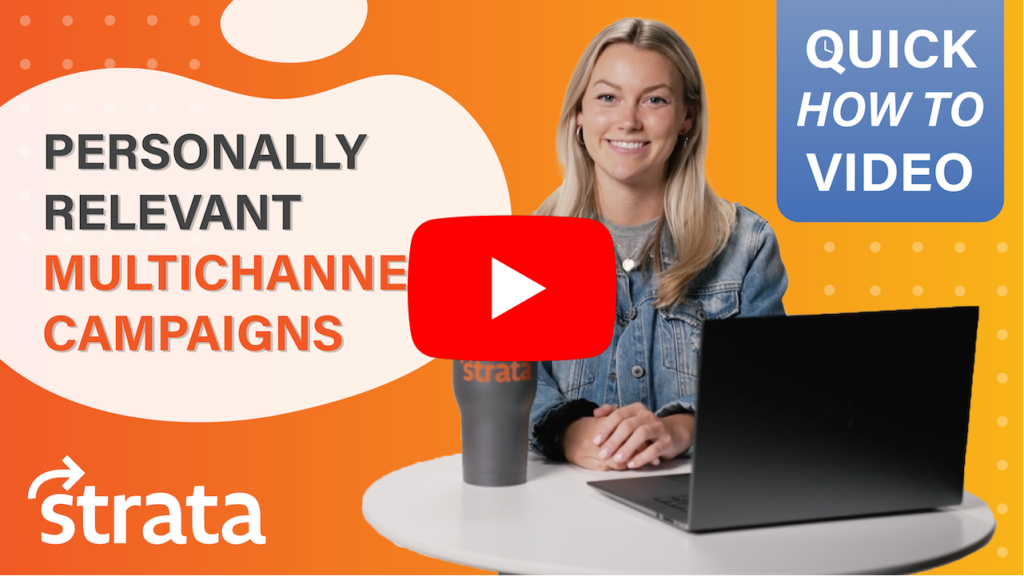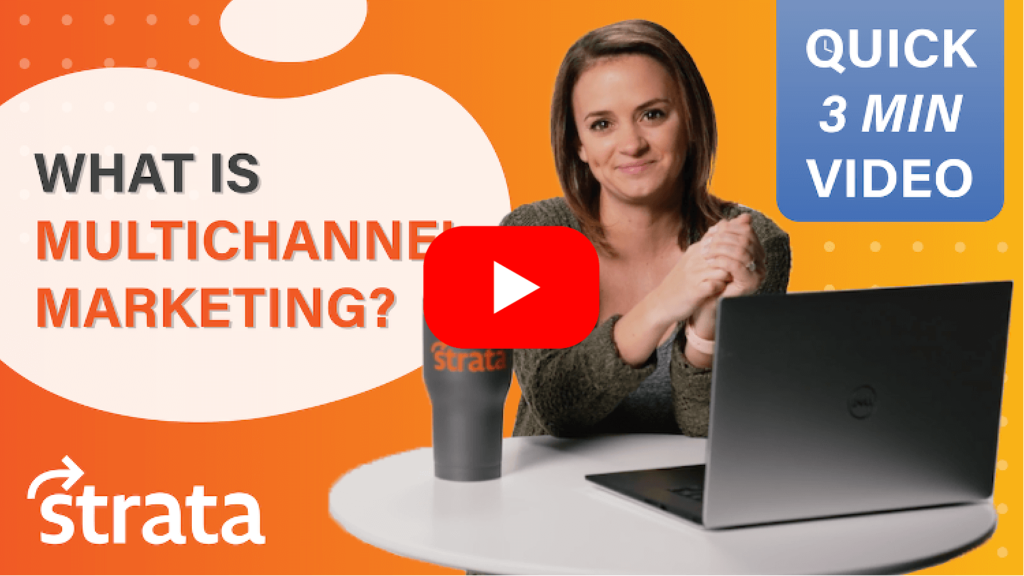& Why They Matter
As you may know, new mover marketing is a big segment for Strata and an offering we’re quite proud of. We believe we do it best – not only because of our experience and skill, but because of the multiple channels we use, the data we provide and incorporate, and the digital touches we implement. We’ve had trust in, and have been executing, great new mover campaigns for several years now. It’s no wonder we have an eye on new mover trends that may arise and behaviors within this segment – but we’re not sure anyone predicted or was prepared for the shift in the new mover market that happened at and after the onset of the pandemic. Today, we’re looking at how the new mover market has changed since March of 2020, and the increased need for new mover marketing solutions that it’s caused.
Stats You Need to Know
To get started, we wanted to give you a few recent new mover statistics to take in and think on:
- A fifth of US adults moved or knew someone that did due to the pandemic.
- Over 110,000 people moved away from New York City between February and July of 2020.
- 487% more people moved out of NY in 2020 than in 2019.
- Although there was no “exodus” away from urban areas that some were claiming, people did and do seem to generally be “drifting towards the suburbs”.
- Families have mostly chosen to move to the suburbs, while those living alone have more often chosen to move to metropolitan areas (In the first half of 2021, 7 in every 10 people who moved into urban areas were those living on their own).
- 35% of moves related to Covid-19 happened because of financial hardships.
- 36% of movers in a recent study claimed their reasoning for moving to a new place was because they felt safer there.
- 10% of them indicated that they moved to places with less stringent Covid-19 restrictions.
Overall, the pandemic has shown to accelerate some moving trends that have already been underway – and also create a few new ones. This, of course, has also had an impact on the effectiveness of new mover marketing (marketing specifically targeting new residents in your area).
What’s Causing all the Movement?
There are several reasons people are moving, some of them which we stated in the statistics above – and others that we’ll get into now. First and foremost, a big reason many have moved and are moving is financial stress. Many are moving to less expensive housing and apartment living to cut costs during these financially tough times. Additionally, apartment amenities or “big city” expenses that were previously valuable became almost meaningless during the peak of Covid-19, causing apartment-dwellers to rethink their living expenses.
Due to increases in work-from-home life and more flexible working hours and situations, people are craving more space. Because of this change, many are moving to larger spaces where they can work more comfortably. Additionally, they’re moving to where they truly want to be instead of where they previously “had” to be for their in-office employment.
For some people in different areas around the country and different industries within the workforce, finding employment during the pandemic has been tough, so this has caused some to find employment elsewhere and relocate.
And lastly, throughout the pandemic, the realization or reminder of the importance and need for family support during times of crisis and distress has been prominent – so many have moved and are still moving to be closer to the ones they love.
Overall – no matter where, when, or why they’re moving, people are definitely on the move since the onset of Covid-19.
How These Numbers (And the Causes Behind Them) Make Marketing to New Movers Essential
As you can probably imagine, as people move out of your area, you lose those customers, but as people move in, the opportunity arises for new customers to replace the old. So, more movers mean more new opportunity – but not if a competitor snatches them up by getting to them first and making a good impression.
That’s why it’s so important to be the first to put your brand in front of this niche audience, and to deliver quality marketing that welcomes, attracts, and entices them. New mover marketing programs are made to keep you connected with these new residents on a consistent basis, so that you’re never missing out on a new customer that, if targeted correctly, could become a loyal, repeat one.
Strata’s program, SmartMove, is a robust, multichannel, multi-touch, new mover marketing program that helps you find the right time and place to reach your target audience, right as they move into your surrounding area. We’ll help you reach this audience throughout their customer journey to build brand loyalty and trust and turn them into long-term, devoted customers. Interested in hearing more of our thoughts on the new mover market, or ready to start your first (or next) new mover campaign? Give us a call.
A Strata YouTube Channel Original
Creating a personally relevant multichannel campaign can be difficult without proper preparation and guidance. Luckily, in this blog, featuring our most recent YouTube video of our Multichannel Marketing series, we go over some marketing personalization statistics, how to create a personalized, cohesive, and seamlessly relevant journey across multiple channels, and ways to better know who your buyers are.
The key to starting is to understand who your audience is and their specific buyer journey. Once you collect this data, it’s time to personalize and make sure the content you’re putting in front of them is relevant.
Map Out Your Customer Journey
When creating the perfect multichannel campaign for your audience, take a look at who your buyers really are and then work backwards to figure out how they became a customer. What high-value acquisition channels did these customers use? Which customers have strong LTV (lifetime value)? Talk to your customer service team and your customers. Once you organize and map that out, you’ll have a much easier time figuring out where the problems are, and where objections are coming from. And finally, discover where customers dropped off in the funnel. Put all of this together, and you’ll have a clear look at the journey your customers take and how you can improve your connections with them.
Establish Your Data
When we say establish your data, we’re talking way more than first names and company names. While those are important – that’s not the personalization customers are looking for these days. You’ll want to start partnering with a company (or using software) that can help you gather info like real-time, on-site behavior, online and offline conversion history, geographic location, product affinities, and device activity. All of this will help you develop a strategy that’s consistent and relevant from one channel to the next.
Ultimately, there’s no one-size-fits-all personalized experience – that’s why customers crave it so much. To see what steps are next in establishing your personalized approach, click on the video below. You’ll hear our Marketing and Social Media Coordinator, Bridget, go through best practices. Or, if you’d like to discuss this concept with one of our multichannel experts, contact us today to get your next (or maybe even your first) multichannel campaign started.
A Strata YouTube Channel Original
Throughout your workday, you might hear the term “Multichannel Marketing” being thrown around casually, and not have the slightest clue of what it’s referring to. That’s okay! We understand that it can sound like an intimidating subject. While up to 95% of marketers say they understand the importance of multichannel marketing for targeting, only 73% say they hjave a multichannel strategy set in place. At its core, Multichannel Marketing is a simple concept that can help your company’s overall marketing campaigns and execution excel. Read along as we walk you through this falsely intimidating marketing concept.
What is Multichannel Marketing?
In a nutshell, multichannel marketing is a strategy that uses a combination of indirect and direct communication channels. With these channels, you’re able to reach all of your clients, prospects, and customers with a multifaceted campaign that can do wonders for your company. Multichannel campaigns are all about distributing the right content to the right people at the right time. Whether it’s by direct mail, digital ads, social, websites, or brick and mortar stores, multichannel marketing can be anywhere and everywhere so that your customers can take action and respond to the channel of their choice. You basically open a window of endless communication possibilities, and let your customers respond on their own terms. There’s no forced communication, because the advertising experience is controlled by the pace of the customer.
98% of Americans switch between multiple devices in one day. If that statistic isn’t enough to make you believe in multichannel marketing’s power, then we don’t know what is. Traditional marketing tactics work, but multichannel marketing is unique because it meets customers where they are along their journey instead of at one single spot. For this reason, multichannel marketing is never a “one size fits all” approach. It requires marketing readiness on multiple channels, especially since 86% of shoppers regularly channel-hop across a minimum of two mediums.
Ready to Learn More?
If we’ve piqued your interest and you’re ready to enhance your multichannel marketing knowledge, check out our YouTube channel or click the video below. Our Marketing Manager, Caitlin, will give you a quick three-minute explanation on this ever-popular topic, or if you’d like to discuss this concept with one of our multichannel experts, contact us today to get your next (or maybe your first) multichannel campaign started.



